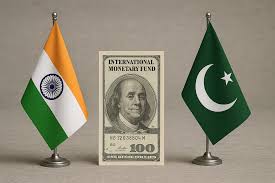Following a deadly attack in Pahalgam, Kashmir on April 22, 2025, which claimed at least 26 lives, India and Pakistan have once again entered a period of heightened hostilities. With both nations taking retaliatory diplomatic actions—including halting visas and suspending official trade—the spotlight is now on the often-overlooked but economically critical informal trade between the two rivals.
Official Trade: A Steep Decline Since 2019
Historically, trade between India and Pakistan saw some promise. In 2017-18, bilateral trade peaked at $2.41 billion. However, that changed rapidly following the Pulwama terror attack in 2019, after which India revoked Pakistan’s Most Favoured Nation (MFN) status and imposed heavy duties on imports. Bilateral trade subsequently fell to $1.2 billion by 2024.
From April 2024 to January 2025, official Indian exports to Pakistan totaled just $447.7 million, while Pakistani exports to India were a meager $420,000, according to India’s Ministry of Commerce.
What’s Being Traded?
India’s key exports to Pakistan include pharmaceuticals, petroleum products, spices, cereals, and dyes. Pakistan, on the other hand, exports copper, sulphur, fruits, and organic chemicals to India. But with the closure of the Wagah-Attari Integrated Check Post (ICP)—the only land route for trade—the cost and logistical ease of trade have drastically worsened.
The Hidden Economy: $10 Billion in Informal Trade
Despite these roadblocks, trade between the two nations continues—but in the shadows. According to the Global Trade Research Initiative (GTRI), informal trade between India and Pakistan could be worth as much as $10 billion annually. This hidden trade is facilitated through third-party nations such as Dubai (UAE), Colombo (Sri Lanka), and Singapore.
Goods are exported from India to these neutral countries, stored in bonded warehouses, relabeled, and then re-exported to Pakistan as originating from the third country. This clever workaround allows traders to sidestep official bans and tariffs.
“This grey-zone strategy highlights how trade adapts faster than policy,” said Ajay Srivastava, founder of GTRI. “It maintains plausible deniability and still fetches high margins.”
Global Parallels in Grey Trade
This isn’t a unique Indo-Pakistani phenomenon. India itself has rerouted Russian crude oil to Europe, bypassing sanctions imposed after the Ukraine war. Similarly, China reroutes goods to India via ASEAN countries to benefit from preferential trade agreements and lower tariffs.
Can Authorities Stop Informal Trade?
Both Indian and Pakistani governments are reportedly aware of the backdoor trade and are taking measures to scrutinize it more closely. Pakistan’s latest move even bans trade via third countries, targeting this very loophole. But enforcing these bans is difficult, as most of these transactions occur in private warehouses and ports, far beyond direct governmental oversight.
According to international trade lawyer Shantanu Singh, “Only Pakistan’s customs authorities can determine the actual origin of these goods, based on documentation and proof provided by importers.”
What’s Next for India-Pakistan Trade?
The cyclical nature of Indo-Pak trade relations—marked by brief periods of normalcy followed by hostility—is nothing new. The 1965 and 1971 wars, the 2019 Pulwama attack, and now the 2025 Pahalgam killings have all triggered sharp disruptions in economic ties.
Still, trade finds a way. Demand for Indian goods in Pakistan remains high, especially for essential items like pharmaceuticals. As Singh notes, “This trade is bound to happen because the demand is real and traders are driven by profit.”
Pakistan, which never gave India MFN status, further downgraded diplomatic relations with India and suspended trade after New Delhi’s Kashmir moves. Since then, talks to resume trade with India have not taken place.
Conclusion
While the latest escalation may have shut official doors, the informal $10bn corridor remains a vital economic artery. Unless there is a fundamental shift in diplomatic relations, grey trade will likely continue to bridge what political walls keep apart.
Read More: A Brief History of India-Pakistan Trade Relations


